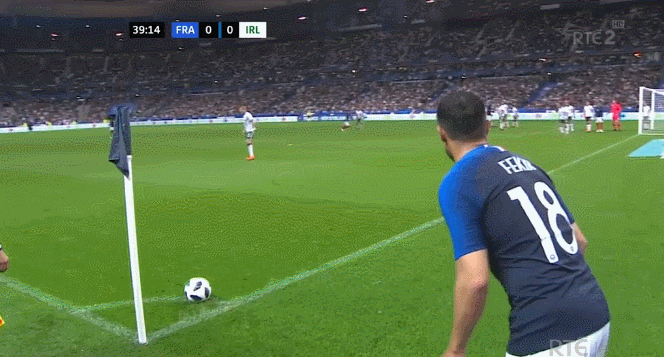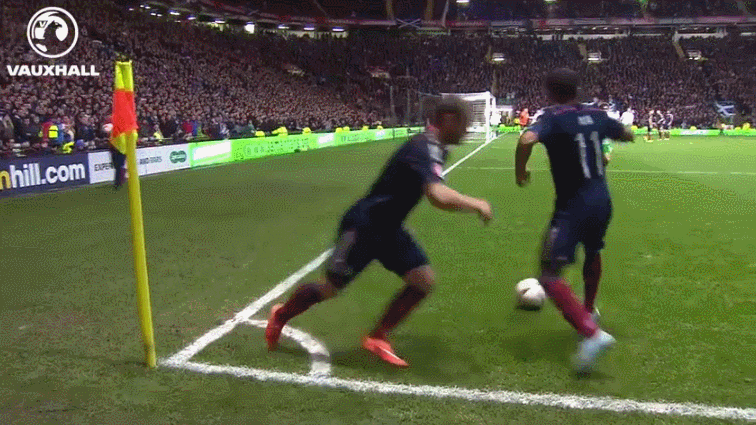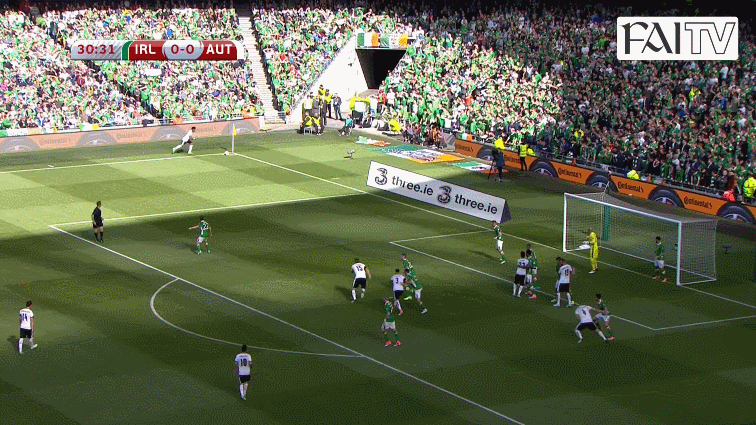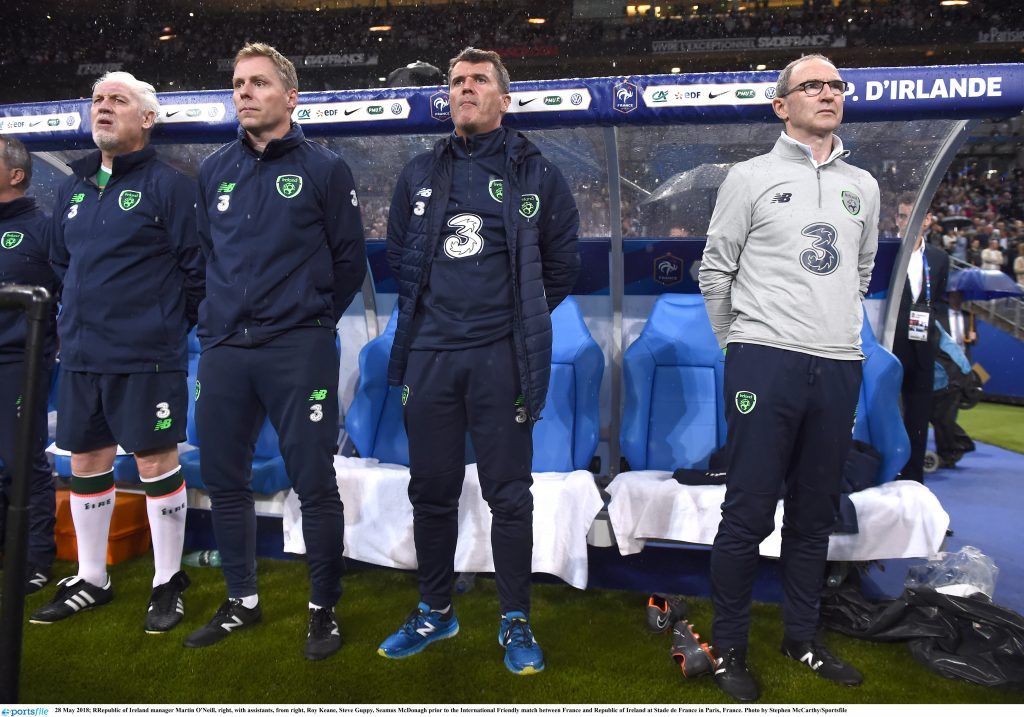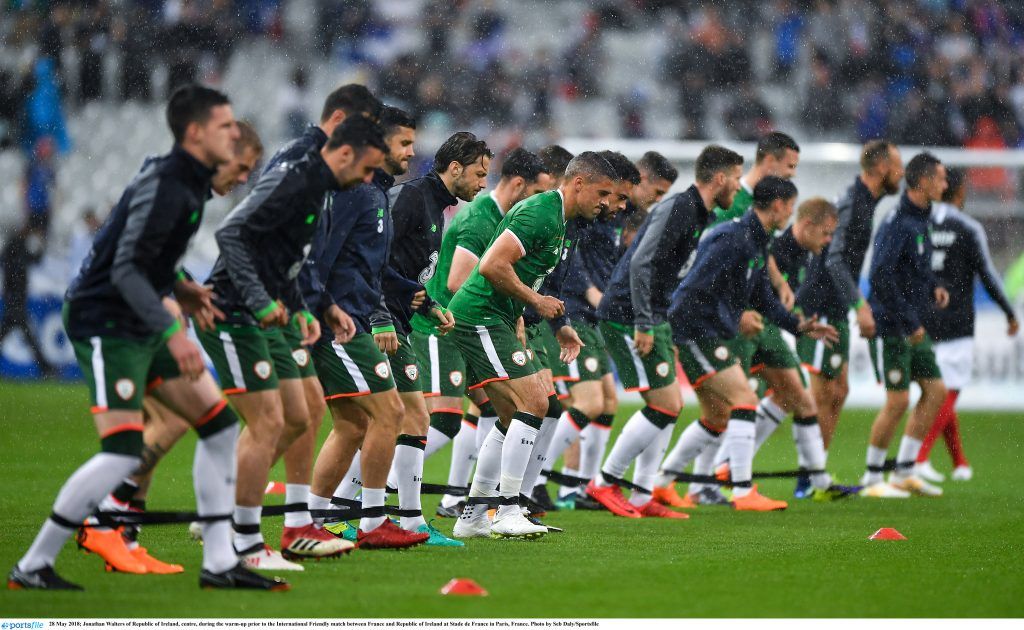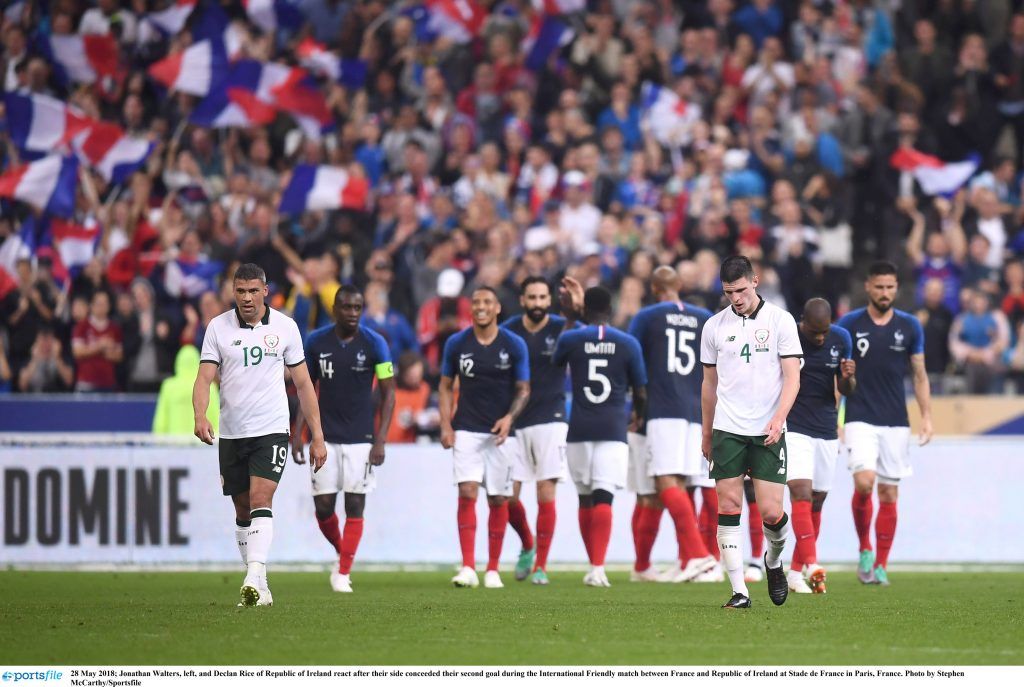This keeps happening.
Following the 2-0 loss to France in Paris on Monday night, Shane Duffy said that set-pieces are Martin O’Neill’s “pride and joy.” The Republic of Ireland defender must have been referring to attacking set-pieces, where Duffy is Ireland’s best chance of scoring a goal. Because Ireland’s record of defending set-pieces has certainly not been a source of pride or joy for O’Neill.
Ireland conceded yet again from a corner in the friendly. Olivier Giroud rose at the back post to win a header and eventually got the ball over the line to give France the lead.
If this was just an isolated incident, it wouldn’t be too much cause for alarm. But Ireland have repeatedly conceded goals from corner-kicks under O’Neill. Since the former Leicester City manager was appointed in 2013, the national team have conceded 48 goals in 48 matches, and at least five goals of those have come directly from a corner. Considering only three percent of corners in football lead to a goal, Ireland are evidently shipping too many goals from this stage of play.
O’Neill’s side have been conceding set-piece goals in important qualifiers, going all the way back to the 1-0 loss to Scotland at Celtic Park in October 2014. The team were completely bamboozled by a well-worked short corner and never recovered as Shaun Maloney slotted it home from the edge of the penalty area.
A year later, in a 2-1 loss away to Poland, Ireland were caught out because they didn’t have anyone on the edge of their own penalty area.
In the World Cup qualifier at home to Austria last summer, which ended 1-1, Ireland conceded from a well-worked corner.
The nature of the set-piece – the low cross, clever dummy and run from the back post to finish from the penalty-spot – suggests that Austria had targeted Ireland, aware of their weakness in defending corners and conjured a plan to hurt them.
Ireland’s woes at defending corners reached its nadir in the 5-1 World Cup play-off second-leg defeat to Denmark. Once again, the team were duped by a short corner.
Notice how the Irish players were all drawn to the ball and vacated the space which Andres Christiansen eventually ran into to score. If there was a plan to defend this set-piece, it quickly went out the window when under pressure.
Ireland have played two friendlies since that night last November (and a testimonial against Celtic) and conceded from a set-piece in both.
Against Turkey in March, O’Neill’s side lost 1-0 and the only goal came from a corner which the team failed to defend. Once again, Ireland appeared to be using a man to man system, rather than defend zonally, and it resulted in players running into the same space, following their men rather than defending a designated zone. The defence broke down and the free man scored.
It appears that all the opposition have to do to unsettle Ireland is to take a short corner, watch them panic and try get a man free for a shot on goal.
Not long before that goal, Turkey almost scored from another corner.
Aiden McGeady has said that O’Neill names the team an hour before kick-off. Shay Given said that O’Neill doesn’t work on a plan to counteract the opposition. While Craig Bellamy, another of O’Neill’s former players, said he never worked on a single set-piece when he played under him at Celtic, and he leaves it to the players to figure out the formation.
When one takes all of this into account, we probably shouldn’t be too surprised to see Ireland make the same errors time and time again.
It wasn’t just set-pieces that caught Ireland out against France, as the other issue stems from the same place – yet again, they displayed no discernible pattern of play on the occasions that they did get the ball.
There was no obvious model to their approach beyond Duffy hoofing the ball as hard and as far away from his own goal as he possibly could. The midfield didn’t push up to support Shane Long when this happened and France soon regained possession. It all felt pointless.
Following the loss, O’Neill said that the team’s “use of the ball” needs to improve. To which the obvious next question could have been, “Yes, and what do you plan to do about it?” Ultimately, the responsibility for the team’s approach lies with him. Damien Duff said on RTE that midfielders eventually stop showing for the ball when they know it is going to sail over their head. At this point, it falls on the manager to prevent this from happening, to make it a clear instruction to pass the ball and show for passes.
If he wants them to keep the ball better, he and his coaching staff need to use their experience and knowledge to craft a plan that doesn’t involve the central defender kicking the ball away. The same applies to defending corner-kicks.
To do this, he needs to use his limited time to coach the players to utilise such a plan, to work on the weaknesses of the team. But, as Richie Sadlier said on RTE, O’Neill is either prepared to accept his team hoofing the ball away, or he is “powerless” to work towards another idea of play.
Either way, the current approach has resulted in the shapeless football the team have been playing, where there is no discernible pattern of play and they concede basic chances and preventable goals. Ireland made the same old mistakes against France on Monday night. Their poor record of defending corners – going back almost four years – suggests that we shouldn’t expect anything different for the foreseeable future, either in or out of possession.
We also shouldn’t expect the current side to string any passing patterns together when they struggle to perform one of the most basic things expected from an international side and adequately defend corner-kicks. Ultimately, the responsibility for both rests with the management team.

